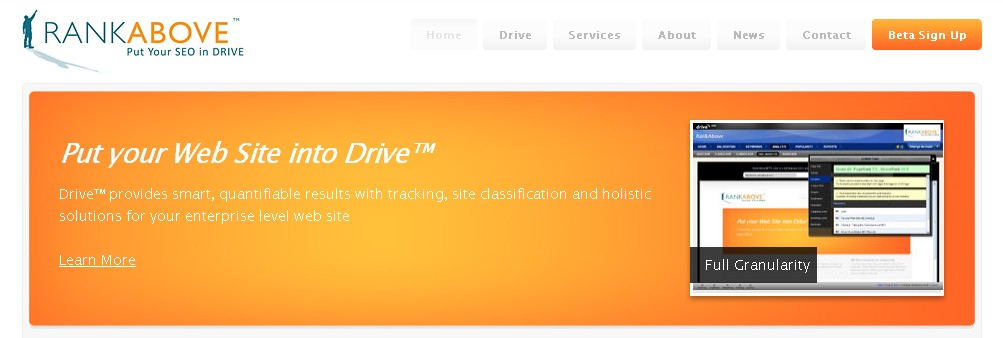By: @Hilzfuld
What was once a small startup company that provided a simple search engine, has become the single most powerful corporation across multiple industries. As the Web and the technology we use daily evolves and becomes more sophisticated, contrary to other areas in which the power is more distributed than ever (see politics), Google is just becoming more powerful every day. Whether it is their entry into new industries like the mobile market with their Nexus One, or their shift to the model of Cloud Computing, there is no denying that Google has become the most significant name in various billion dollar industries.
One such industry, and probably the primary one, is of course search. There is no way around search engine optimization in today’s online world, and it is not an exaggeration to say that if you do not spend your time and resources on advancing your ranking on search engines, and let’s be honest, when we say search engines, we mean Google, your online business, whatever it might be, is doomed for failure.
While new businesses are popping up online by the second, business owners are faced with the complicated and sometimes frustrating task of optimizing their website for Google. This involves first and foremost analysis, but we are getting ahead of ourselves here. What is Search Engine Optimization and how does one do it? Well, to be honest, I am no expert myself, but I have learned a lot about the topic from some serious experts, so I will share with you the little I do know.
Someone smart once told me that Google and the Web is similar to the restaurant industry. He then went on for over an hour laying out the similarities for me. Unfortunately, I did not have a pen or a laptop to write it all down, so I forgot many of the points he made. However, the concept it simple. If you have a restaurant and you want to succeed in bringing people to eat your food, one of the first things you need to do is of course publicize yourself. Who are you and what do you offer? The first step in doing this is of course choosing a name for your vendor and then putting up a relevant and appealing sign on the front to attract visitors. If you have not caught on yet, this is equivalent to selecting the URL for your site, updating the title and descriptions of your home page as well as all the other pages on the site.
From what I understand, these are the most important factors when optimizing a site, the title and descriptions. The similarities are many, but to name a few, imagine your restaurant gets written up in the most prestigious restaurant journal in your area, that will of course have a tremendous affect on your popularity and you might even see the results instantly. One writeup like that in a few journals will of course bring even better results. This is equivalent to serious websites posting a link back to your site. The more links you have from “serious” websites, the better Google will recognize you as a leading “restaurant”.
Other factors that matter when trying to get your name out there is of course the menu or the content. If the content is great on your site, that will obviously advance your ranking in the eyes of the almighty Google as good food on your menu will bring you more visitors. However, to give one example of a less significant SEO issue, if the food on your menu is not original and a certain recipe was “stolen” from a nearby vendor, who just happens to be the biggest restaurant around, people will assume you stole the recipe and not the other way around. Same goes for content, if your site includes articles or content that appears word for word on a leading website, the content can be the best in the world, you still might not get credited for it.
So, now, you should have a very basic idea of what SEO is, but how do I do it? How do I conduct the analysis of my pages? How do I know what title, description, or keywords to use to best advance my site? How do I actually change that information? These are some of the many questions you need to ask yourself before optimizing a site. The answer? Well, there are many tools available, that from my experience each provide a very specific functionality in the process of SEO. There are tools that focus on keywords, those that deal primarily with links, and others that work with your content.
I have had the privilege over the past month to work with and evaluate one of the industry’s most robust and comprehensive web-based software suite. The software is called Drive and was built and engineered by an SEO company called RankAbove. Before I get into the details of what Drive does, and it does a heck of a lot, let me first say that its main advantage from a user’s standpoint is its ultra user-friendly UI. SEO is not an easy process and a complicated and hard-t0-use interface is the last thing a person needs when optimizing their site. Drive, if I am judging by its interface alone, could have just as well been a piece of music-related software, or anything else for that matter. It is very easy to use, explanations of all the different screens are built in, and the entire experience of Drive is top notch.
As for the features provided by Drive, the list is long, but it is important to understand one point before getting into them. SEO, like other industries or fields require a lot of hard work. No matter how good your SEO software is, someone is still going to have to do the “dirty” work. Drive takes care of all your analysis needs, but in terms of implementing the detailed feedback Drive provides, that you are going to have to do yourself.
So, setting up Drive on your website is a breeze, which involves a three step process. The software conducts an extremely in depth analysis of your site, no matter how many pages it includes (RankAbove works with some seriously big names/sites), in just a few clicks. The first time I saw drive working, I was blown away by how much it did in how little time. So, now you are probably thinking “OK, it analyzed my site, now what?” Good question. While Drive does not add titles or keywords for you, it does include a sophisticated prioritization engine that gives you actionable advice based on importance. So, if your home page has a bad title or no title at all, Drive will tell you to forget everything else, and work on that ASAP.
OK, so Drive tells you what needs to be done and in what order to do it. Now comes the time to allocate the tasks to your team. Drive takes care of that too with an advanced SEO Management tool allowing you to assign the various tasks to multiple people.
Getting down to more details, Drive updates itself regularly on the keywords you should be using based on your primary competitors, as well as what keywords are in use throughout your site. This is the kind of information that a company not using Drive might spend days if not weeks trying to find through intense and comprehensive market research. Drive saves you time, energy, and lots of frustration on this front, not to mention that it most likely does a better job at keyword discovery than a person will do when manually researching the market.
Drive also includes all the analytics you would need for your site, by both incorporating the ability to use Google Analytics from within Drive and a partnership with Omniture to provide an analytics suite. The list of features goes on, but the concept is simple. All the SEO analysis tools in one nicely designed interface. Here is the kicker though. SEO is a tricky thing because Google updates their search algorithm daily if not hourly, even if by the smallest parameter, and you need to keep up. Drive also provides daily updated prioritization based on Google’s algorithm, which will ensure that your site is up to date in terms of its optimization level.
Like I said, I can go on for hours about the details of Drive and its long list of features, but at this point, I think you get the drift, so I would like to add one more point regarding RankAbove as a company and less about Drive as software. During this period of testing, I was in contact with various people over at RankAbove, and to say that they have great customer service would be an understatement. They were available with technical questions at any time, and they conducted themselves with the highest level of professionalism when it came to any questions or feedback we had about Drive. Sometimes, when you spend so much time and energy developing something, and then you get feedback on how to improve the product, it is easy to get defensive and block it all out. RankAbove not only heard and listened to our feedback, they very much appreciated it, and intend on implementing it. They are all about user experience and therefore are big believers in user feedback.
In terms of its disadvantages, the tool is Web-based, so while that provides some serious benefits like access from anywhere, it also means you are dependent on the speed of your connection. We found some minor lagging in the interface, but with such a robust and significant tool, that is to be expected. Some of the different tabs in Drive, such as the Reporting section are still being developed based on user feedback, let’s not forget that Drive is still in Beta. All in all, the tool impressed us on all levels, and it is pretty clear that any online entity can benefit from the solution provided by RankAbove’s Drive.
Like I said, it was a pleasure working with the guys at RankAbove and I for one, look forward to future cooperation, whether it is testing out new features or versions of Drive, or using the full suite on future websites with which I am involved.





Thanks Hillel, can tell us about the pricing of this product?
Debbie, contact me offline (or by email) and I will tell you anything you need to know. Thanks for reading 🙂